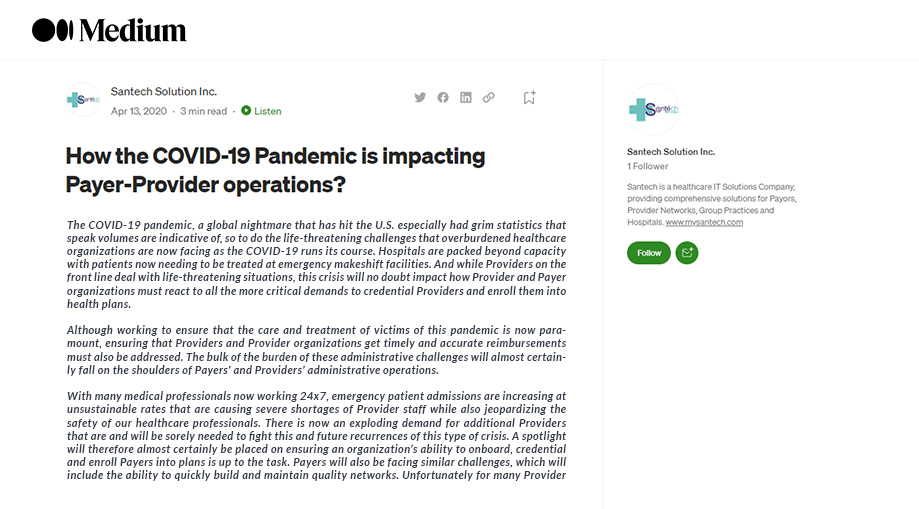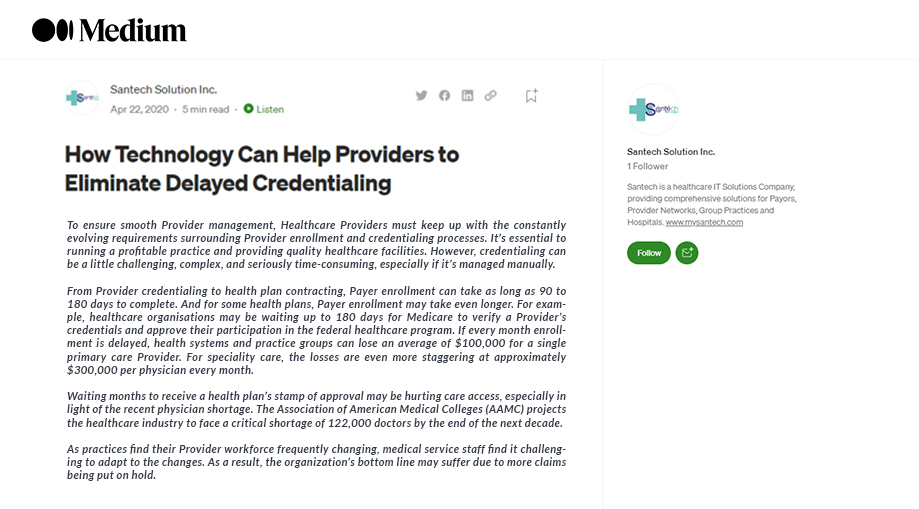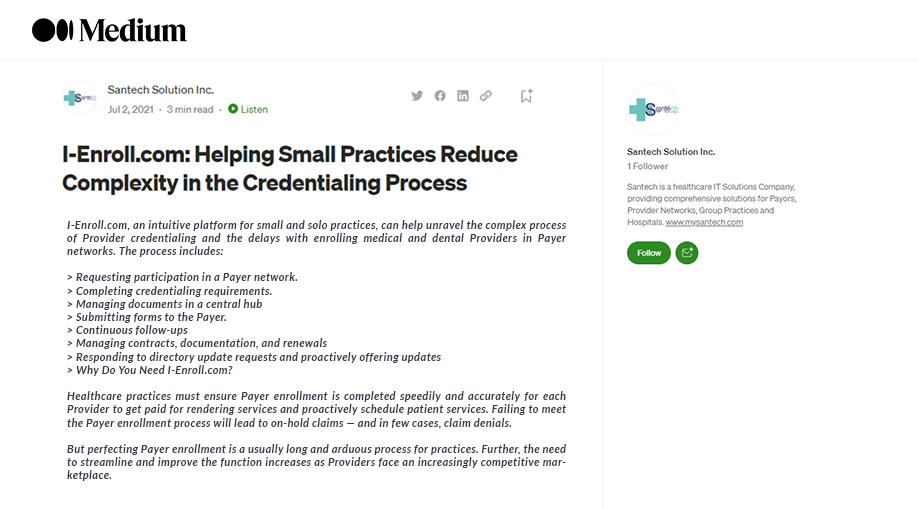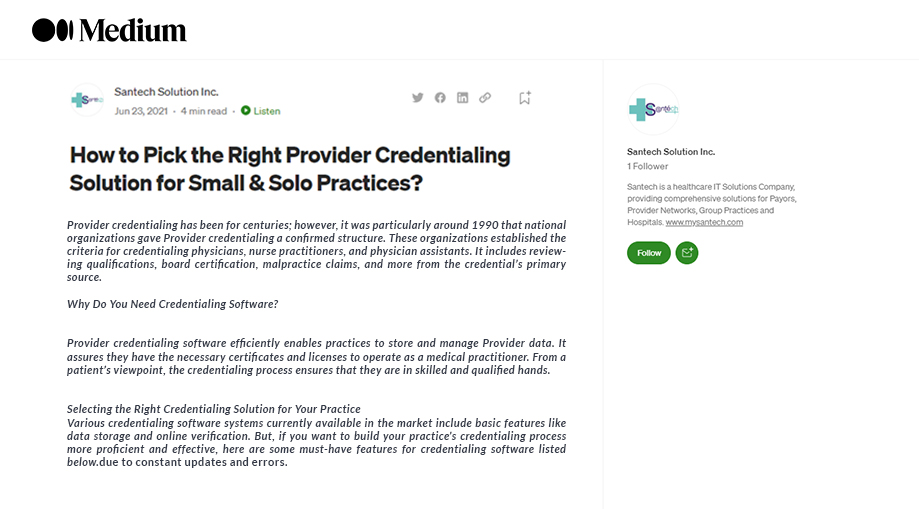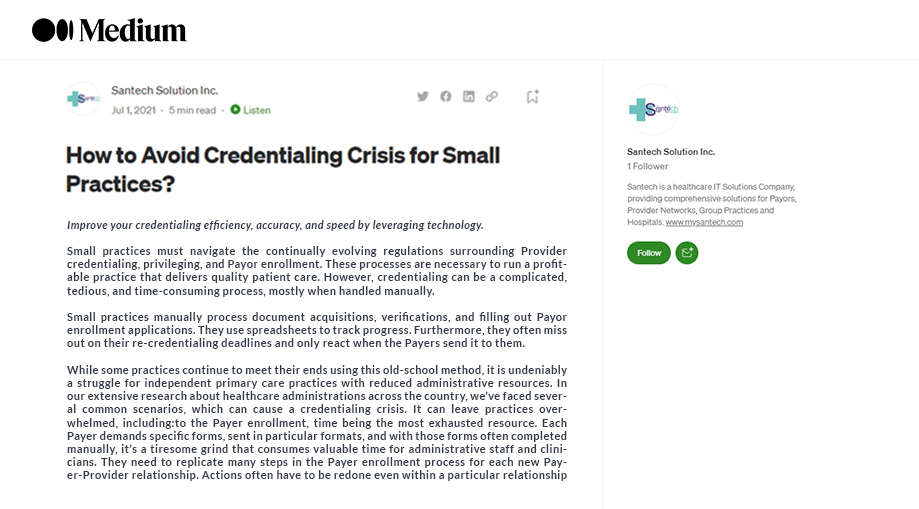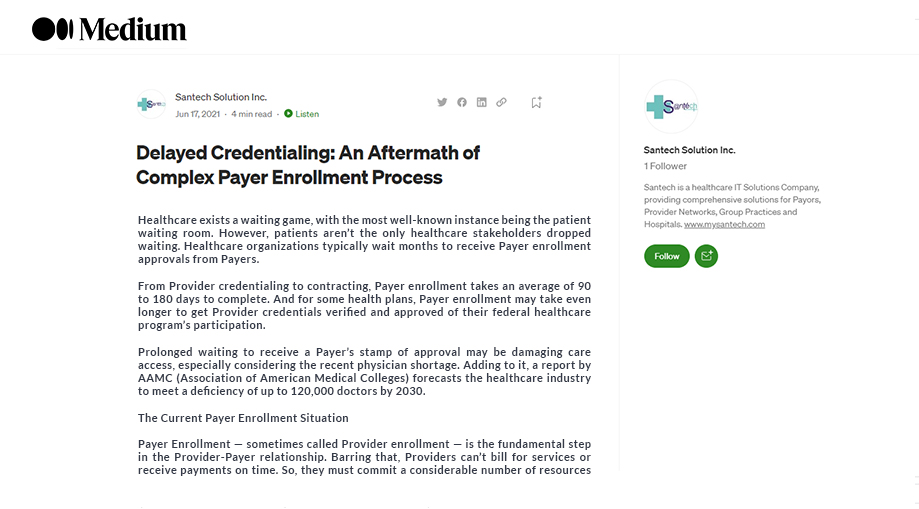To ensure smooth Provider management, Healthcare Providers must keep up with the constantly evolving requirements surrounding Provider enrollment and credentialing processes. It’s essential to running a profitable practice and providing quality healthcare facilities. However, credentialing can be a little challenging, complex, and seriously time-consuming, especially if it’s managed manually.
From Provider credentialing to health plan contracting, Payer enrollment can take as long as 90 to 180 days to complete. And for some health plans, Payer enrollment may take even longer. For example, healthcare organisations may be waiting up to 180 days for Medicare to verify a Provider’s credentials and approve their participation in the federal healthcare program. If every month enrollment is delayed, health systems and practice groups can lose an average of $100,000 for a single primary care Provider. For speciality care, the losses are even more staggering at approximately $300,000 per physician every month.
Waiting months to receive a health plan’s stamp of approval may be hurting care access, especially in light of the recent physician shortage. The Association of American Medical Colleges (AAMC) projects the healthcare industry to face a critical shortage of 122,000 doctors by the end of the next decade.
The Existing Payer Enrollment Situation
Payer Enrollment is the initial phase in the Payer-Provider relationship. Without it, Providers can’t start to bill for administrations or be paid in a timely manner, so they should commit a lot of assets to finish the enrollment procedure.
With every Payer requiring explicit forms, sent in specific arrangements, and with those forms regularly filled manually, it’s a dull task that requires a significant amount of time for physicians and their staff. There are various steps involved in the process that must be redone for each new Payer-Provider relationship, and steps frequently must be repeated even for a single Payer due to frequent updates and errors.
While rounding out forms and agreements may appear to be a basic regulatory undertaking, the absence of consistency in the procedures utilized by Payers, clearinghouses and other outsiders leaves open doors for errors. In most of the cases, Payer Enrollment comprises these eight steps:
● The Provider starts the credentialing procedure for new clinician.
● Provider communicates to the Payer that they are keen on credentialing.
● Providers manually fill up various kinds forms.
● Payer gets a Provider’s application.
● The 90-day-in survey process starts.
● Payer plays out a different and distinctive confirmation.
● Payer acknowledges Provider application.
● The procedure repeats for two-three years to follow the National Committee for Quality Assurance (NCQA) credentialing norms.
The end-result of such a drawn-out procedure is a divided framework with absolutely no specific characterised responsibility of the data and different roles included. The manual errands engaged with the procedure likewise forestall smooth exchanges, from the requirements for “wet signatures” to the utilization of snail mail to submit contents. The aftereffect of those components is the expanded risk of “terrible information,” which further confounds the procedure by making irregularities and redundancy. Also, with no single source of truth to fill in as a definitive asset, errors keep on accumulating, costing more money and time.
Now let’s take a look at these key challenges separately that dampen the credentialing process
● A fragmented data that is pulled in all directions and verified multiple times by different sources
● In reference to the point aforementioned, a constant confusion arises as to who actually owns the data- is it the organisation staff, verifying offices, or the smaller third-party Payers.
● It’s a cumbersome manual process. As a matter of fact, even today almost 83% of all the credentialing processes are carried out through papers and mails. This makes it a high-risk endeavour.
● The constant change in data address, multiple alterations, it all contributes to an inconsistent management.
Despite the availability of apps such as CAQH provided by different institutions and state authorities, the problem of delayed credentialing does not seem to be going away.
However, the coming innovative automation has proved to be the only stand-out solution that is truly influential and helps organisations save millions of dollars. Let’s move on to the next section to explore more about it.
Fixing the Problem
The frequent inefficiencies, fragmented data, and management issues with the Payer enrollment process is something that almost every organisation and healthcare professional would identify with. So, a robust Provider data management solution is indeed required to alleviate these challenges.
I-Enroll, a premier Provider data management platform from Santech Solutions puts Provider recruitment, Provider credentialing, Provider privileging, Provider re-appointments, and Payer enrollment processes under one umbrella. It shortens Provider on boarding cycles, resulting in more timely revenue recognition.
It automates preparation and assembly of Payers application and follow-up proactive notifications on re-cred coming due. The I-Enroll Provider data management lowers expenses associated with credentialing and privileging activities and supports seasonal spikes in on-boarding and re-credentialing volumes.
I-Enroll strengthens and streamlines organisation capabilities for delegated and non-delegated contracts. It automates the upkeep and tracking of enrollment application status by Payer, Provider, and Location. The I-Enroll Provider data management proactively tracks and screens Provider for re-enrollment. It automates and flawlessly coordinates to third party information for administration services. It also responds quickly to the adjustments in guidelines that sway Provider information management. In general, I-Enroll lessens the Provider’s disappointment due to a wasteful procedure.
The convenient enrollment of Providers into healthcare plans has become a significant prerequisite for supporting a flourishing practice. Santech’s I-Enroll can assist you with diminishing the administrative work issues, streamline your Provider on-boarding procedure and boost up the revenues of your organisation.
Conclusion
The Healthcare industry is undergoing a massive transformation for Providers and Payers, who are determined to add more value to their business by providing the best facilities for their patients. To deliver such goals a substantial modification, of both revenue models and technological faculties, is taking place.
I-Enroll is a classic example that integrates innovation and technology to bring together a sophisticated software for better Provider data management. It provides a personalized credentialing solution with comprehensive end-to-end functionality that takes care of all elements of data management.
The solution intelligently automates Provider directory updates that sends automated directory responses to Payers without any manual interventions. This eliminates the painstaking task of making repeated inquiries and updates. So by removing the burden of unnecessary fact-finding and other administrative tasks from the staff members, it reduces the risk of inconsistencies and manual errors, and also the dependency on human efforts.
I-Enroll also ensures Provider directories are updated automatically as per their state-authorised regulatory period. It saves you from the trouble of managing numerous Provider directories with different scheduling.
I-Enroll promises faster enrollment and faster credentialing through an incredible data management experience and helps organisations provide only the best healthcare facilities to their beneficiaries.


